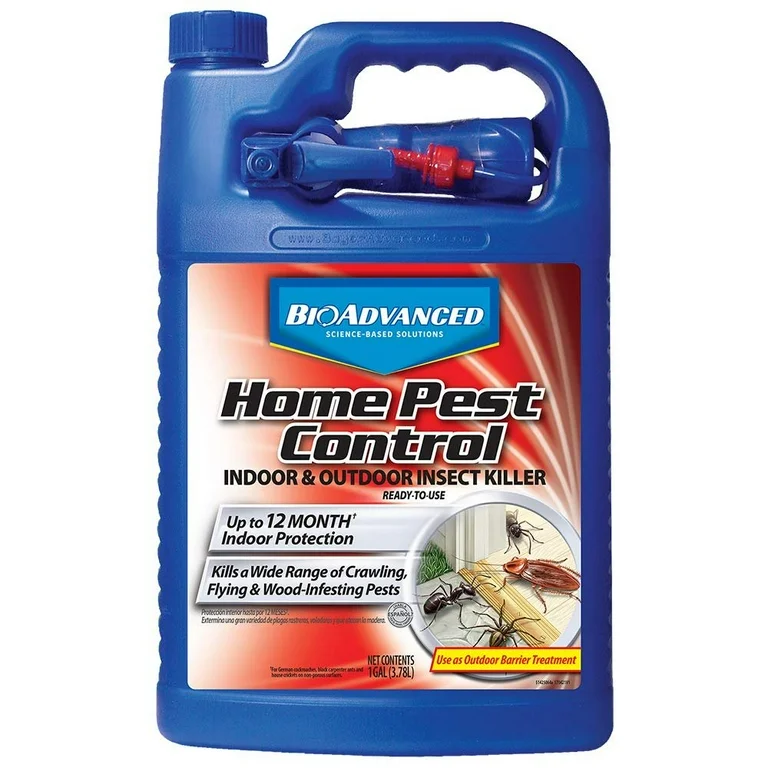A1 Charlotte Pest Control Companies - Your Regional Pest Experts
A1 Charlotte Pest Control Companies - Your Regional Pest Experts
Blog Article
Bed Bug Treatment Break Down: Contrasting Chemical Vs. Non-Chemical Solutions
In the world of parasite control, particularly when handling the relentless problem of bed insects, the choice between chemical and non-chemical therapy services can be a critical one. Both strategies offer distinctive advantages and drawbacks, influencing factors such as effectiveness, safety and security considerations, and total price. By examining the nuanced information of each method, a more clear understanding of which path to go after in resolving a bed pest problem can be obtained.
Efficiency of Chemical Treatments
Chemical treatments for bed bug infestations have actually been widely recognized for their fast and powerful effectiveness in getting rid of these pests. When thinking about the effectiveness of chemical therapies, it is vital to understand that they can provide a fast and extensive option to a bed pest trouble.
Moreover, chemical treatments have the advantage of supplying recurring impacts, suggesting that they can remain to remove bed pests even after the first application. This residual activity is especially useful in combating any potential re-infestations. Additionally, the quick activity of chemical therapies can bring relief to individuals facing extreme bed insect infestations, allowing them to regain control of their space rapidly.
Safety And Security Worries With Chemical Solutions
When using chemical solutions for bed pest therapy is guaranteeing the security of passengers and the setting,One important element that needs cautious consideration. While chemical treatments can be effective in eliminating bed insects, they might position dangers if not managed correctly. One of the key security interest in chemical remedies is the prospective injury they can cause to human health. Direct exposure to specific chemicals utilized in bed pest treatments can cause respiratory system problems, skin inflammation, or various other unfavorable reactions, particularly in individuals with pre-existing problems or level of sensitivities. Furthermore, incorrect application or dose of chemical pesticides can lead to hazardous residues sticking around in the treated location, posing long-term health threats to residents.
In addition, the ecological impact of chemical options is an additional considerable factor to consider. Some pesticides used in bed pest therapies may be dangerous to beneficial bugs, wild animals, and communities if they leach into the soil or water systems. It is important to make use of chemical therapies sensibly, complying with security guidelines, and thinking about less toxic options to mitigate these risks and ensure the secure and reliable monitoring of bed insect invasions.
Benefits of Non-Chemical Strategies
Taking into consideration the potential security concerns and environmental influence associated with chemical solutions for bed insect therapy, exploring non-chemical approaches presents an appealing alternative with a number of distinctive benefits. Non-chemical treatments are eco friendly, as they do not contribute to air or water contamination, making them a lasting choice for bug control.
Additionally, non-chemical solutions can be reliable in targeting bed pests, consisting of hard-to-reach areas where chemical treatments might not penetrate. Techniques such as warmth treatment, vacuuming, steam cleansing, and bed mattress encasements supply complete eradication without the use of harmful chemicals. Furthermore, non-chemical techniques can be much less turbulent, calling for marginal prep work and permitting quicker reentry right into treated locations. On the whole, choosing non-chemical bed bug therapy techniques not only prioritizes safety and environmental defense yet also makes certain extensive and efficient parasite control.
Limitations of Non-Chemical Treatments

In addition, non-chemical treatments often require multiple applications to attain effective elimination. This can be lengthy and might not always guarantee total removal of all bed pests and their eggs, particularly in concealed or hard-to-reach locations.
In addition, the success of non-chemical treatments greatly counts on correct execution and thoroughness, which can be testing termite pest control for people without professional know-how. Poor application of non-chemical methods may cause incomplete removal, causing relentless invasions and the requirement for extra treatments.
For that reason, while non-chemical treatments have their benefits, it is vital to recognize these constraints and consider them when establishing one of the most reliable approach for handling bed pest infestations.
Expense Contrast: Chemical Vs. Non-Chemical Options
Provided the restrictions connected with non-chemical treatments, a vital aspect to review in the context of bed bug monitoring is the price contrast in between chemical and non-chemical alternatives. In comparison, non-chemical therapies like heat treatment or steam can be extra costly, with prices varying from $1,000 to $6,000 for a whole home. While the preliminary cost of chemical treatments might seem lower, numerous treatments may be required to completely eradicate the infestation, potentially raising the overall price.
Verdict

Thinking about the possible safety concerns and environmental influence associated with chemical options for bed bug treatment, discovering non-chemical techniques presents a promising choice with numerous unique advantages.Offered the restrictions associated with non-chemical treatments, a vital aspect to evaluate in the context of bed pest administration is the expense contrast in between chemical and non-chemical choices. In contrast, non-chemical treatments like warmth therapy or vapor can be extra costly, with expenses ranging from $1,000 to $6,000 for an entire home. While the preliminary price of chemical therapies might appear lower, several treatments may be needed to totally get rid of the invasion, possibly boosting the total expense.In final thought, when comparing chemical and non-chemical bed insect treatment alternatives, it is necessary to Recommended Reading take into consideration performance, safety, benefits, restrictions, and cost.
Report this page